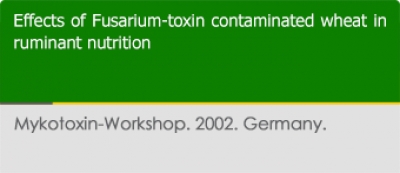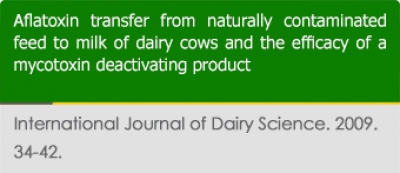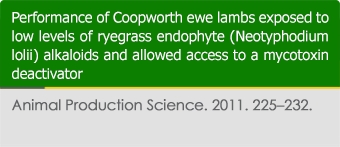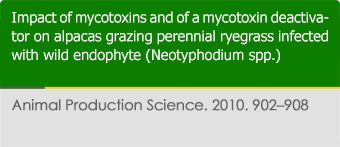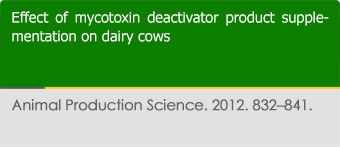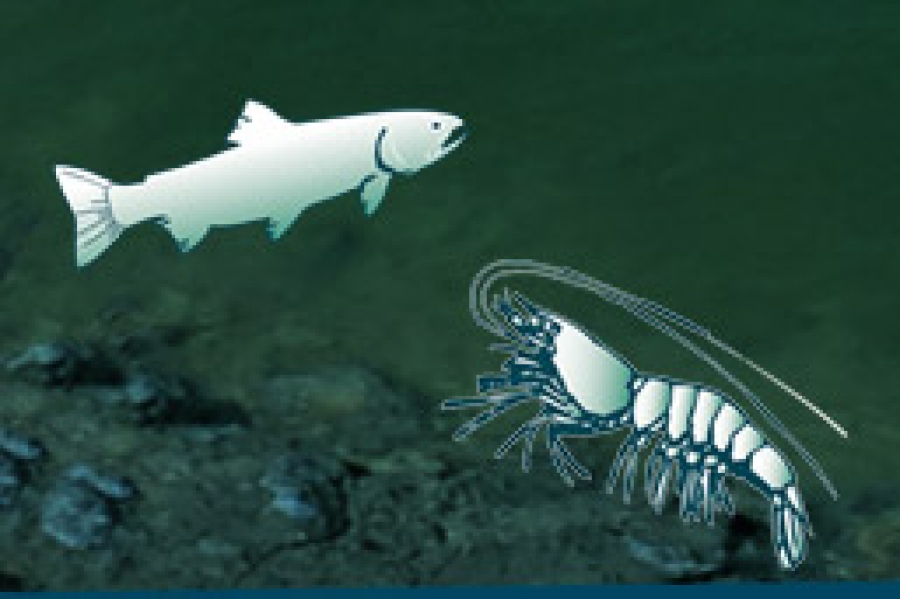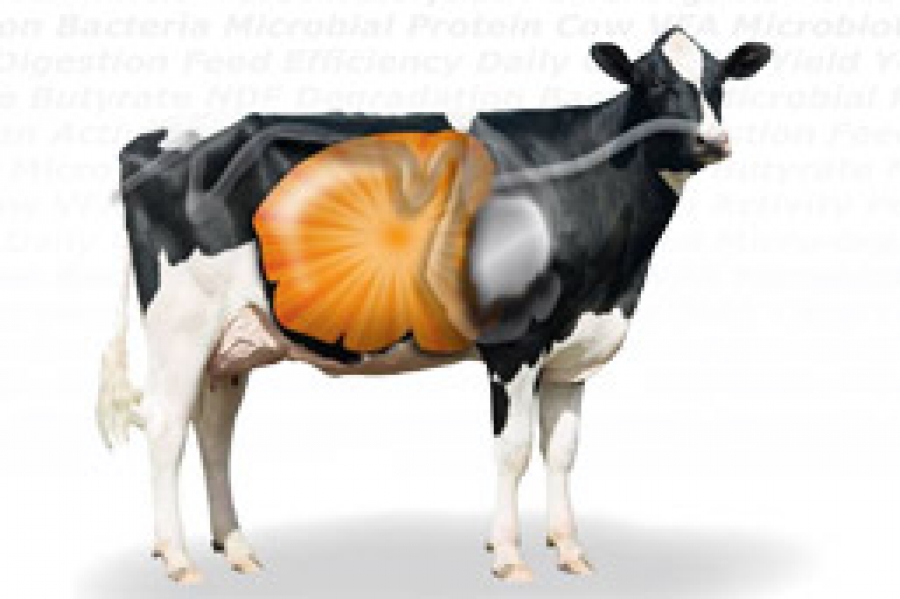Danicke S., D. Gädeken, K.-H. Ueberschar, U. Meyer and H. Scholz
An experiment was carried out to examine the effects of a Fusarium-contaminated wheat (10 mg deoxynivalenol and 0.76 mg zearalenone, ZON, per kg dry matter) on fattening performance and slaughter yields of growing bulls, and on carry over of ZON into tissues and body fluids. In a second study, rumen physiological parameters were investigated in wethers equipped with a rumen fistulae. Moreover, the influences of a detoxifying agent (Mycofix®Plus, MP, Biomin GmbH, Herzogenburg, Austria) were considered as an additional experimental factor beside the contamination of the wheat (uncontaminated control wheat, Fusarium-toxin contaminated wheat). The experiments were designed according to a complete two by two factorial model of ANOVA which required
Pietri, A., T. Bertuzzi, G. Piva, E. M. Binder, D. Schatzmayr and I. Rodrigues
This study reports the results of an experiment, testing the aflatoxin B1 (AfB1) carry-over from naturally contaminated feed to the dairy cows’ milk in the absence and in the presence of a mycotoxin deactivating product-Mycofix® Plus (MPL). The study was carried out using 18 healthy animals divided into 3 homogeneous groups of 6 animals each. The experimental design was a 3x3 Latin square with three periods of 7 days each without washout periods. The treatments were: (1) control diet without MPL (CTR); (2) control diet with 20 g/cow/day of MPL (T1) and (3) control diet with 50 g/cow/day of MPL (T2). The diet was a Total Mixed Ration (TMR) and 1 kg of a naturally contaminated maize meal (AfB1 = 91.7 ± 4.4 μg kg-1) was included in the diet of each cow. Each animal ingested daily
Reed K. F. M., A F, L. J. Cummins, D. D. Moore and A. J. Clark
During February–April, Coopworth ewe lambs grazing a pasture dominated by naturalised perennial ryegrass (PRG) exhibited slight signs of ill-thrift and heat stress. PRG represented 85% of the herbage; 90% of the PRG population was infected with Neotyphodium endophyte. Concentrations of ergovaline and lolitrem B in perennial ryegrass were each within the range 0.5–1.0 mg/kg DM during this period. Two groups of 30 lambs rotated weekly between two paddocks that offered 6 t DM/ha of mature, low-quality pasture. They received an allowance of crushed barley and peas (80 : 20) at 100 g/head per day. One group was treated with a mycotoxin deactivator, Mycofix® Plus, mixed into their mash during processing (5 g/100 g). No sign of ‘staggers’ was observed in the lambs at any time.
K. F. M. Reed, J. L. Vaughan, L. J. Cummins, D. D. Moore
Liveweight gain, animal health and the effectiveness of a mycotoxin deactivator were studied on an old pasture that contained 61% perennial ryegrass. Sixty-seven percent of the ryegrass population was infected with endophyte (Neotyphodium spp.). The pasture was fenced into two halves and two groups of 28 alpaca male weaners were rotated between the two plots. Nine to 10 Suris and 18–19 Huacayas were allocated to each group. One group was fed a concentrate supplement (100 g/head per day) and the other was fed the same supplement to which was added the toxin deactivator, Mycofix® Plus (5 g/100 g). Mean liveweight gain on the low-quality pasture over late summer and early autumn was not significantly (P > 0.05) different between the groups.
Kiyothong, K., P. Rowlinson, M. Wanapat and S. Khampa
A total mixed ration (TMR) containing a blend of feedstuffs naturally contaminated with harmful mycotoxins was fed for 84 days to 24 primiparous and multiparous Holstein–Friesian × local dairy cows in a randomised complete block design. The dietary treatments consisted of a contaminated TMR diet plus various levels of the mycotoxin deactivator product (MDP) (0, 15, 30 or 45 g/head.day). Deoxynivalenol (DON), fumonisin B1 (FB1), zearalenone (ZON) and ochratoxin A (OTA) were found in the TMR at levels up to 720, 701, 541 and 501 μg/kg, whereas aflatoxin B1 (AfB1) and T-2 toxin (T-2) were found in the TMR at levels of 38 and 270 μg/kg, respectively. Rumen microbial ecology, ruminal volatile fatty acid (VFA) concentrations, ruminal microorganism populations, feed intake,



